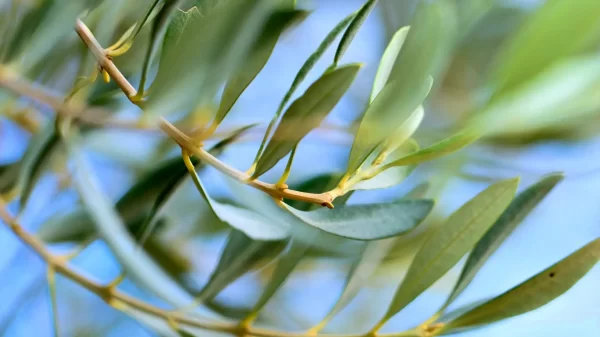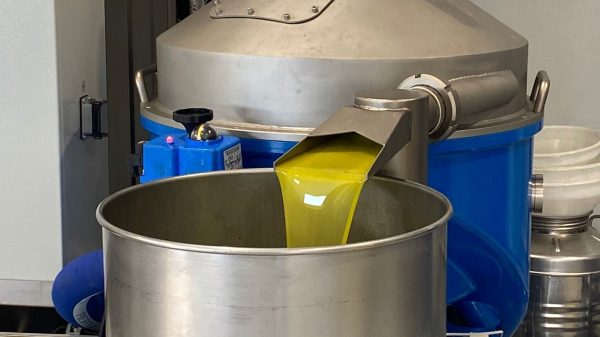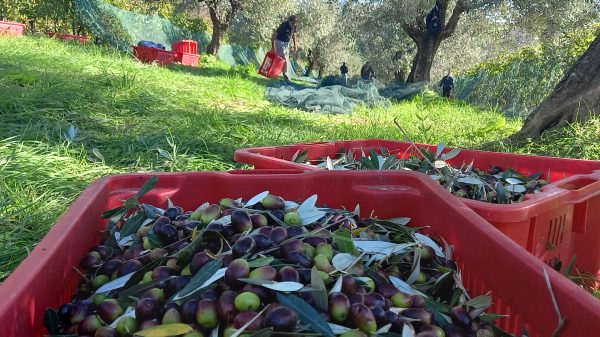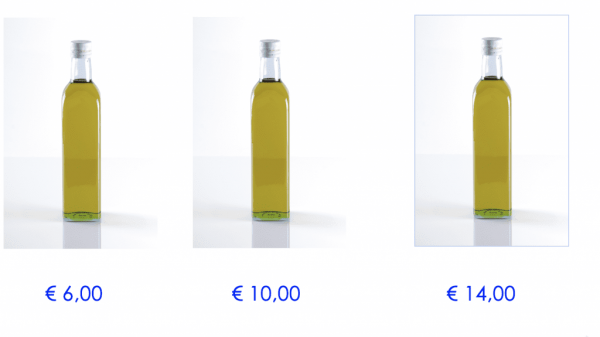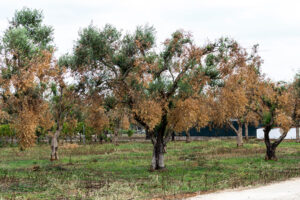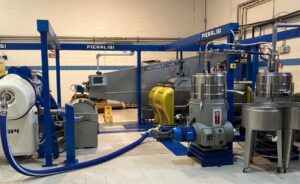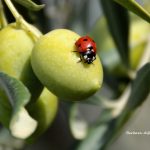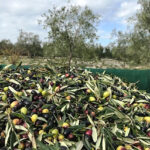 Pruning is a topic "Thorny", always at the center of olive growers' discussions. A simple observation: in the olive growing world, we notice that the average teaching offering of most courses concerns pruning. It is difficult to find a course that teaches the ways and times of olive harvesting or the production and conservation of oil.
Pruning is a topic "Thorny", always at the center of olive growers' discussions. A simple observation: in the olive growing world, we notice that the average teaching offering of most courses concerns pruning. It is difficult to find a course that teaches the ways and times of olive harvesting or the production and conservation of oil.
This leads the grower to think that in modern olive growing, pruning is the most important aspect in the entire oil production process! Yet if we could compare two identical plants, obtained by cutting from the same branch, planted in the same soil, with the same exposure, fertilization and irrigation, one of which subjected to correct annual pruning and one not subjected to any cutting operation, we would could easily observe that:
– the unpruned olive tree has a drupe production equal to or higher (and in any case not lower) than the pruned one;
– the oil yield is similar and only in particular years is it lower in the unpruned plant;
– the production alternation remains almost unchanged;
– the unpruned olive tree becomes taller and thicker, presenting a more florid vegetative appearance than the pruned one;
– the costs of harvesting olives on the unpruned plant are double those for the pruned plant;
– pruning costs generally have a lower cost impact than harvesting costs.
Obviously this is a barbaric simplification. Pruning essentially depresses the plant, does not increase fruit productivity or oil yield and does not modify the production alternation. This means that the increase in production is obtained in another way, that is, with the specialization of cultivation, soil working, the fight against parasites and diseases, fertilization, fruit selection, the elimination of alternation and irrigation (compare: B. Alfei, G. Panelli, A. Ricci, Quality olive growing, Ediagricole Il sole 24 Ore, Bologna 2003, pp. 151-154)
In addition to this, it must be taken into consideration that pruning is the most expensive operation in the entire production process after harvesting and therefore must be rationalized and facilitated, keeping in mind that a processing error can compromise the fruits of the plant for several years. .
Why then is pruning so important?
– In my personal opinion, one of the most important aspects of pruning (along with that of facilitating the execution of field operations) is to standardize and improve the interception of light, avoiding mutual shading of the leaves caused by too close foliage or thick, encourage ventilation which inhibits the formation of humidity and therefore reduces the incidence of parasites and allows any pesticide treatments to penetrate the vegetation, especially if sprayers are used. It is good to remember that when the illumination of the foliage drops below 20-30% of the maximum possible light irradiation, the processes of photosynthesis, the development of the shoots, the growth and the softening of the fruits are reduced proportionally. Field studies agree in stating that in the presence of values 30% lower than the maximum available light intensity, flower induction does not occur or is very reduced. And if the new leaves that develop in the year of pruning do not receive maximum sunlight for the entire development cycle, in addition to suffering a reduction in photosynthetic activity, they are not able to reach a photosynthetic capacity equal to those grown in conditions of good lighting.
– Pruning is then important because it serves to build a correct relationship between leaves and wood and between vegetative and productive activity, maintaining that vegetative-productive balance which allows on the one hand the growth of new branches in the spaces left free and on the other the unhindered development of branches already ready to bear fruit.
– Allows the formation of a solid scaffold to support the weight of the fruit and any snow without risk of breaking the branches: this is thanks to the possibility of arranging the secondary branches in a balanced way along the main axis in the monocone or along the branches main in the polyconic, organizing their position in space, but also and above all their size, from the largest and most structured ones in the lower part to the thinnest in the highest sector of the crown.
– Preserves the correct relationship between leaf surface, root extension and overall volume of the foliage, a very important aspect especially in centuries-old plants where the woody mass is often important.
– Eliminate portions that are diseased or attacked by parasites, avoiding the death of the plant.
– It promotes respect for the training method and the skeleton of the plant, which are functional to the type of plant and the harvesting method: for example, in the case of using facilitators, good vibration transmission must be guaranteed. In cases of shakers, the plant must instead be prepared for mechanical action on the trunk.
– Another substantial aspect of pruning is to facilitate the execution of cultivation operations, in particular harvesting, significantly reducing costs: one thing is harvesting olives from a two/three meter high plant with an open and well-thinned foliage which can easily be carried out from the ground with manual combs; another is to collect olives from a fifteen meter tall plant with very developed and thick foliage.
I remember that pruning should be done from the ground with pruners or pruners or scissors or chainsaws installed on telescopic rods. The use of these accessories has the advantage of guaranteeing the safety of operators who do not have to climb stairs, ladders or worse climb the tree, but also and above all it has an important economic value because it manages to limit the pruning and cleaning intervention within a limit of 10 minutes per tree (or less: it depends on the size and condition of the tree) and consequently the costs of processing in the field.
Then there are two aspects, the emotional one and the hedonistic/aesthetic one, which despite having no connection with cultivation practices, nor with production, nor with the quality of the product, are nevertheless shared by the majority of olive growers and for this reason cannot be ignored.
The first aspect is the emotional one, which triggers a normal bond between the olive grower and his plant, who dominates and cares for it through pruning.
The second is instead of an aesthetic/hedonistic nature, where the beauty of the olive grove becomes both an object of comparison between olive growers and a characterizing element of the landscape. What would the Tuscan hills be without olive groves or the Lombardy lakes without the terraces covered in olives? And what about the centuries-old plants of Puglia or the Sicilian olive trees that form the backdrop to the temples? And I could cite I don't know how many examples in Italy alone.
How often should you prune an olive tree?
Tradition dictates that the olive tree must be pruned every year, because this allows for orderly and punctual management of the plant, without too drastic interventions: a job that is often reduced to a few cuts, which can be done in 5-10 minutes per tree , depending on its size. This timing choice obviously depends on your organization and the available manpower.
Biennial pruning is perhaps the most widespread today. We intervene with scissors and saws every two years, obviously requiring a slightly more demanding intervention, having to take into account the vegetative development of two growing seasons, requiring a little more time (about ten to 10 minutes) and resources (larger branches and greater waste).
The costs themselves are obviously higher than annual pruning, but they are spread over two years, making this practice economical from all points of view.
It is also possible to carry out pruning every three or four years as in the nineteenth century, but it must be a well-considered choice and in accordance with company strategies, because it involves agronomic risks (as well as disregarding the constraints of the CAP). Multiannual pruning obviously involves heavy interventions on the plant which accentuate the alternation of production.
In the first year there will be a low or no production, in the second a modest/medium production and in the third year an abundant production and so on in the fourth: if on the one hand this confirms that the unpruned olive tree has an equal or higher drupe production to the pruned one, on the other hand it makes us understand that if in the third year adverse weather-climatic phenomena occur with an impact on the plant and therefore on its productivity, the entire multi-year production cycle is economically compromised.
Browse for free L'OlivoNews click , here.
